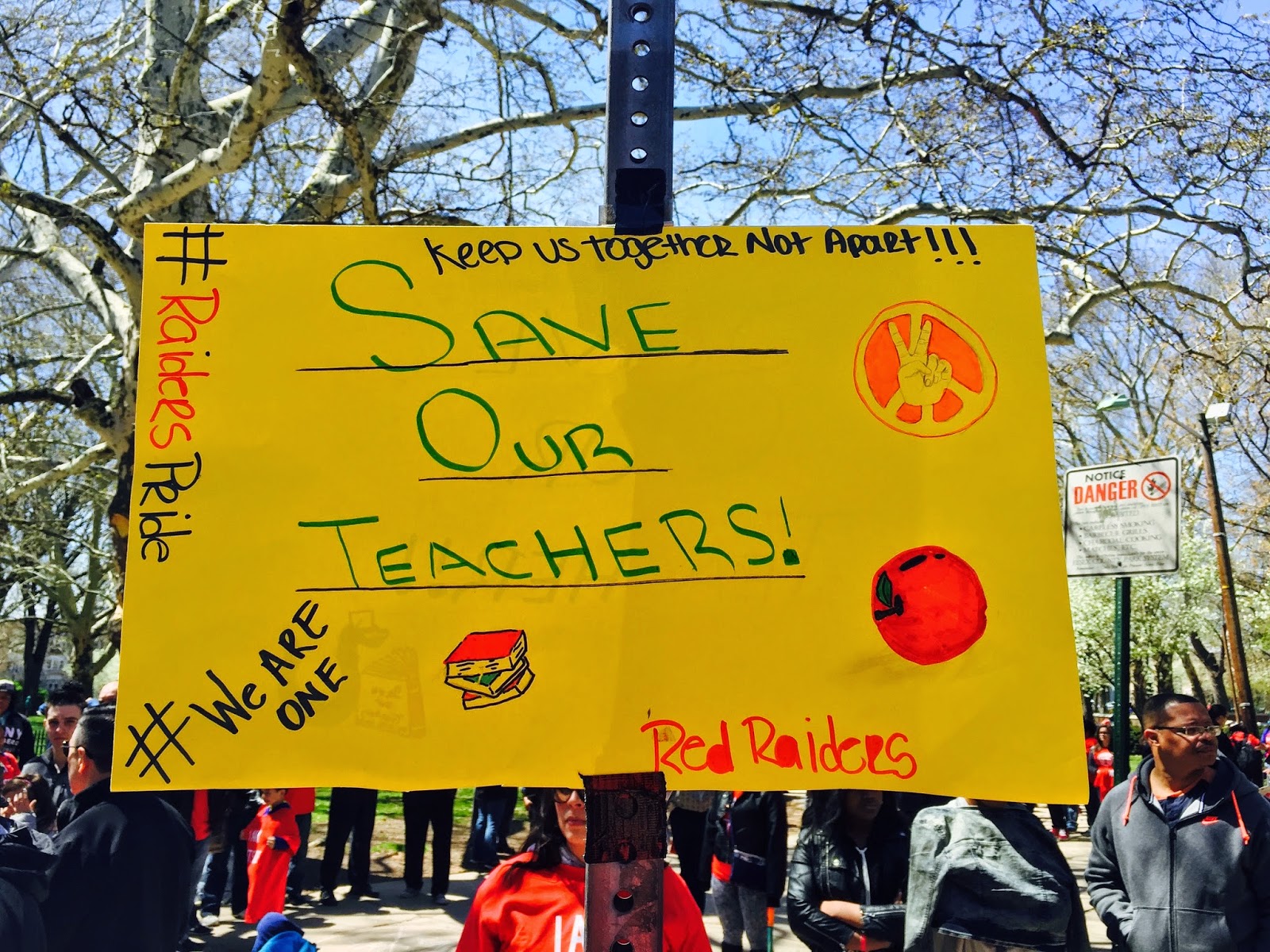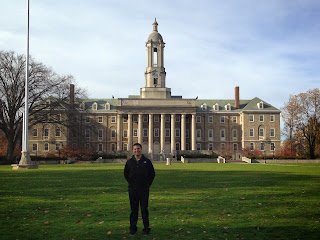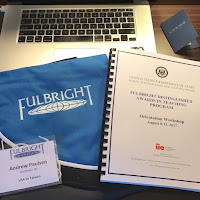When Ed Reform Goes Too Far
As all of my friends and co-workers would attest, I am
extremely passionate about the field of education. I fundamentally believe that
our students and thus our schools are essential to the future of our great nation.
I also believe that every student can be pushed onto a track towards future
success; Stanford Professor Dr. Jo Boaler pointed out during a recent
conference in Boston that 95% of our current students have the mental and
physical capacity to attend a post-secondary institution if they are taught in
the right way. It promptly follows that we must make our schools better if we
are serious about the lofty goal of putting every student on the road to
college and career readiness.
Over the course of the last five years, I have read almost
every book I could get my hands on that examines various theories about so-called
education reform. I have considered a wide range of diverse opinions, ranging
from Diane Ravitch to Michelle Rhee to Joel Klein. More recently, I have become
immersed in the work of Elizabeth Green and more specifically the notion that
we need to move away from the vicious ‘accountability vs. autonomy’ arguments
that permeate the discussions surrounding education reform today.
One may be wondering where all of this incredible passion comes
from. Over three years ago, I was given the opportunity of a lifetime as one of
the 17% of applicants accepted into Teach For America's 2012 corps, and was subsequently
placed at East Side High School in Newark, New Jersey. Although there have been
many emotionally draining and stressful occurrences over the course of the past
three years, my experience working in Newark has shown me the potential our
astonishing students really have. I think of my many students who are first
generation immigrants, excelling at school while struggling to learn a language
and grow accustomed to a new culture that is so very different from the one in
which they have grown up. I think of students like Melissa, a junior who is
poised to become the first person in her family to attend college, and has led
the Robotics team to the first ever district finals. And then I think of
students like Austin, a senior that has become like a little brother to me,
who, through unimaginable stress and tremendous adversity, has persevered and
risen to the top of his class, being named Salutatorian while being elected
President of the Student Council and serving as captain of the varsity soccer
team. Austin has also won some of the most competitive scholarships (including
the prestigious Coca-Cola Scholarship and the NHL’s Thurgood Marshall Scholarship) while being offered admittance into some of the most elite
universities our country has to offer (including Duke, the University of
Pennsylvania, and Cornell). And they have all done well in part because of the
opportunities they have had while attending East Side High School.
 |
| Our Language Arts Literacy Proficiency Trends, courtesy of the NJ DOE Report Card |
East Side is the largest high school within the governance
of the Newark Public Schools. It is one of the few Newark high schools with
high demand as enrollment has skyrocketed over the course of the past three
years due to more families wanting to enroll their children at East Side High
School. As a designated Title 1 School, 81.9% of our students are considered
economically disadvantaged, 15% of students are classified with special needs,
and 18.3% are English Language Learners (Source: The New Jersey Department of Education state report card for East Side High School). While our school has
had and will continue to face many difficult and sensitive challenges in the
road ahead, one thing that no one can argue is which direction East Side is
headed. As many “Data-Driven” educational leaders would say, let us look at the
data. Star-Ledger Reporter Naomi Nix has recently put forward that, “the share
of students considered proficient in language arts increased from 67 percent
during the 2010-2011 school year to 79 percent during the 2013-2014 school
year, while the number of students considered proficient in math has increased
from 63 percent during the 2010-2011 school year to 75 percent during the
2013-2014 school year.”
 |
| Our Math Proficiency Trends, courtesy of the NJ DOE Report Card |
Which is exactly why our entire building – teachers, administrators, and students alike – were shocked to discover that the Newark Public Schools
has designated East Side High School as a turnaround school for the 2015-2016
school year.
Huh?
When pressed with any possible rationale as to why a
state-appointed administration would aim to turnaround one of the brightest
beacons of hope in the Newark Public Schools, they responded with saying that
the incoming 8th graders are achieving at a significantly lower rate
than last year’s cohort, and it is those students that truly need to be “turned
around.” I am not sure I follow this argument; if this is true, why not turn around the K-8 schools first? For me
personally, I already get to school by 7:00 am and leave at around 5:00 pm
everyday. If these reforms are to go through, I would lose about 90 minutes of daily
lesson prep time (40 minutes from a shortened prep and 50 minutes from the
extended school day) in addition to gaining a 6th class. Until what
time does the Newark Public Schools want me to work? Do they want me to put in
12-hour days on a consistent basis? I need at least two hours to plan a highly
effective lesson that is culturally relevant and engaging for our students. This
is in addition to all of the extremely important extracurricular activities, extra help, and
empowering conversations that I have with students on a daily basis. I am worried
that I will burn out even earlier next year, and that I will not be as mentally
ready to give it my all during class day-in and day-out.
 |
| View of the #WeAreEastSide rally from across Independence Park |
I worry that some of our educational leaders have lost touch
with reality, and that we are starting to lose focus of the bigger picture. I
resonate strongly with Nicholas Kristof’s recent piece in the NY Times, which
put forward the notion that improving our schools is essential, but at what
cost? While working in an inner-city school for the past three years, I agree
with him that we must “support education reform. Yet the brawls have left
everyone battered and bloodied, from reformers to teachers unions.”
 |
| Our principal Dr. Santos speaking at the #WeAreEastSide rally |
And to the Newark Public Schools: as a Teach For America
alum, I want to be on your team. I want to believe in what you stand for, but
it has become increasingly difficult to support a vision that completely
decimates our public schools. I share in your resolve to make the Newark Public
Schools a great school district, but I promise you that “turning around” East
Side High School would do nothing more than de-stabilize the most stable
comprehensive public high school that Newark has to offer. If the turnaround
designation stays, many of our best teachers will choose to leave the district
in large droves. The fallacy with many of these reforms is that the best
teachers – “The Irreplaceables,” as they are often called – will have
opportunities in other districts, and that only the worst teachers will be
stuck in the Newark Public Schools. At the Partner’s for Excellence reception the
district held earlier in the year, district leaders declared how we as a
district must do everything we possibly can to retain our highly effective
teachers, yet the actions of the district seemingly advocate for the exact
opposite. I worry that if these reforms go through and there is a mass teacher
exodus as expected, it will take at least a decade to restore the school to
anything faintly resembling East Side as we know it today. I urge the district
to reconsider this turnaround designation, and instead give our instructional
leaders worthwhile professional development that will truly improve our pedagogy.
I lobby for new teacher coaches so that my colleagues and I can continue to
grow as educators, which will help our students far more than simply extending
the school day by an hour. And please
allow for an open and honest dialogue with the people that have the biggest
impact on student achievement and the ones who are fighting on the front lines
every single day – your teachers.
To close, I must ask: Are we creating conditions in our
urban schools such that our best teachers leave and our worst teachers stay?
Does urban education go too far when it does more to drive away the
irreplaceable teachers to other districts or professions than to keep them in
the classroom? And when will we learn that education reform must be done WITH
schools and communities and not TO them?
As for me, I still have tremendous hope for our future.
Perhaps I am an eternal optimist or a hopeless romantic, but I am a teacher
because I fundamentally believe that education has the power to change the
world. I know that our schools can do better and that many things in the K-12
system need to change. But is there a point when education reform goes too far?





Comments
Post a Comment